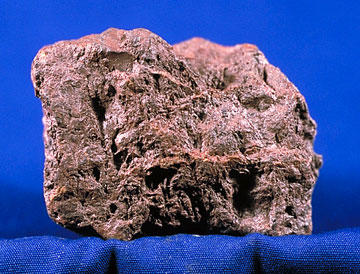According to the data provided in the Periodic Table, a common isotope of Nickel has 28 electrons, 28 protons and 31 neutrons (Schaller Section 28).
The difference between covalent and ionic bonds is often reduced to the state of matter, in which they traditionally occur, yet there is a bit more to the specifics of these types of bonds.
Unlike covalent bonds, which usually occur in gases or liquids, presuppose high polarity, have a definite shape and a low melting point, and, most importantly, only between atoms of the same type (non-metal), ionic bonds can be observed between atoms of a different type (metal and non-metal), have a high polarity, do not have a definite shape, and set the melting point relatively high (Lutgens and Tarbuck 36).
As a rule, the term “luster” is referred to the mineral’s capacity to reflect light; in other words, the term “luster” is supposed to evaluate the albedo of the mineral in question. The term “streak,” in its turn, is referred to the color, which a mineral has when being crushed to dust (Lutgens and Tarbuck 42).
Since the hardness of quartz is much higher than that one of fluorite (100 compared to 21 respectively, based on the Mohs scale (Mineral Hardness: Mohs Hardness Scale Table 1)), fluorite cannot possibly scratch quartz. Quite on the contrary, in the process of the minerals contact, quartz can leave a rather deep scratch on fluorite (Lutgens and Tarbuck 40).
Titanium, which belongs to the silicate minerals group, yet does not fall into a particular category and stands on its own, is traditionally used as a replacement for lead compounds. A non-silicate group member, Ruthenium is rather rare and is traditionally used as a component of platinum alloys, a source material for wear-resistant electrical contacts and resistors (Song, Koch and Wand para. 5).
Based on the properties of the mineral in question, it can be assumed that Hematite is described. Indeed, according to the existing data, the hardness of Hematite varies from 1.5 to 6.0, which includes the point of 2.5. Also, Hematite is described as “soft,” which also complies with the information concerning the mineral to be defined. Hematite usually has no cleavage and has a rather smooth surface, which also corresponds to the description provided in the question.
As far as the color of the mineral is concerned, one must admit that the choice of Hematite might seem somewhat farfetched. Indeed, the color of the given mineral is not particularly brown; as a rule, the mineral appears in black and dark-brown colors.
However, brownish Hematite also exists, which allows suggesting that Hematite is the mineral that has been described in the assignment. Finally, it should be noted that, due to its color, Hematite has a non-metallic luster, which is also very soft. Consequently, it can be assumed that Hematite is the mineral described in the task.

Works Cited
Lutgens, Frederick K. and Edward J. Tarbuck. Foundations of Earth Science. 7th Ed. Upper Saddle River, NJ: Prentice Hall. 2014. Print.
Mineral Hardness: Mohs Hardness Scale. 2012. Web.
Mineralogy – Magnetite and Hematite. 2011. Web.
Schaller, Chris. Appendix: the Periodic Table. Web.
Song, Jina, Christian Koch and Liangliang Wang. “Correlation between Wear Resistance and Lifetime of Electrical Contacts.” Advances in Tribology 2012.9 (2012), para. 1–6. Web.